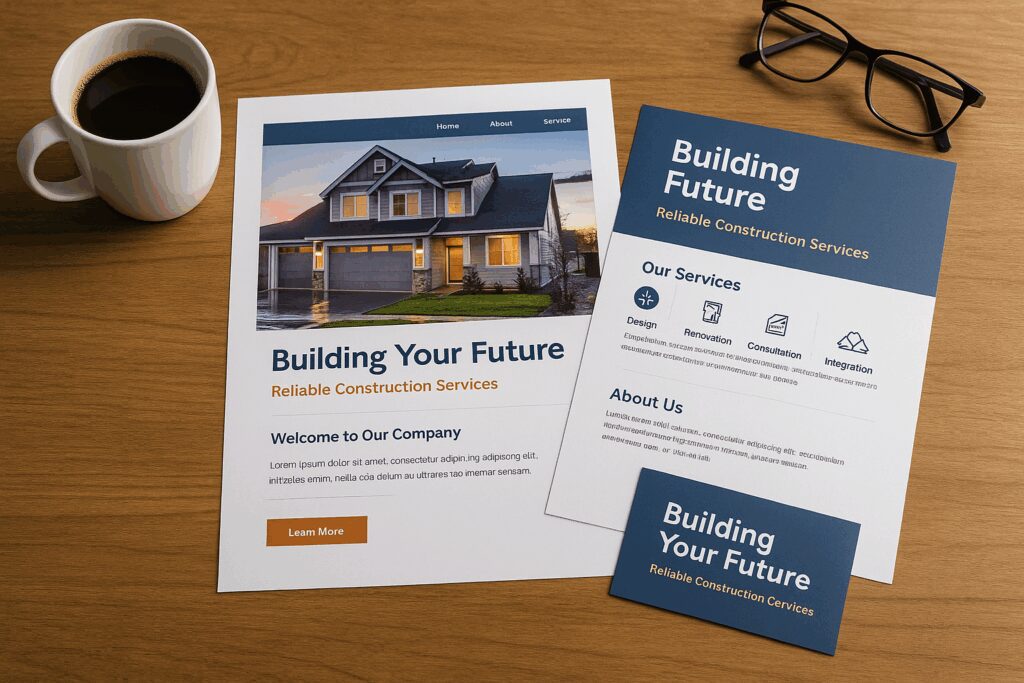Launching a business is exciting, but it’s also messy. You’re juggling product development, cash flow, hiring, and customer acquisition all at once. In the middle of all that, “brand messaging” can feel like the kind of fluff you’ll figure out later. But skipping it at the startup stage is a mistake that can cost you time, money, and momentum.
Your brand message is simply how you explain who you are, what you do, and why it matters. Done right, it becomes the backbone of your website, sales conversations, brochures, social posts, and investor pitches. Done poorly—or not at all—it leaves customers confused and investors unconvinced.
Why Brand Messaging Matters for Startups
- Clarity beats complexity: Early on, you can’t afford for prospects to scratch their heads about what you offer. A strong message strips out the noise and makes your value obvious.
- Consistency builds trust: When your story shifts from conversation to conversation, people lose confidence. Clear messaging keeps your team, your website, and your sales pitch on the same page.
- Efficiency saves money: Every dollar counts when you’re bootstrapping. Having messaging nailed down means your marketing spend (ads, website, collateral) isn’t wasted on trial and error.
- Differentiation helps you stand out: Most startups have competitors. Messaging is how you highlight what makes you worth paying attention to—even if you’re new.
What Goes Into a Brand Messaging Guide
The Brand Messaging Guide is a simple playbook that captures the language of your business in one place. Here’s what each section includes and how you’ll use it:
- Target Audience Profile
A clear snapshot of your best customers: who they are, where they’re located, and what problems they face. This keeps your marketing focused on the right people instead of trying to appeal to everyone. - Brand Voice & Tone
Defines the personality of your business and the style of your communication. Consistent voice builds recognition and makes sure customers experience you the same way across your website, emails, and conversations. - Unique Point of View
Captures what you believe about your industry and the mistakes you help customers avoid. This is where your philosophy and perspective come through—helping you stand out from copycat competitors. - Brandscript (StoryBrand)
A structured way to tell your story by showing empathy for customer problems and guiding them to solutions. It’s a framework that makes sales pitches and website copy both relatable and persuasive. - Company Taglines
Short, memorable lines that sum up your business at a glance. Think of them as ready-made headlines for ads, landing pages, or even your business card. - Value Proposition
A single sentence that explains the result customers can expect from you. It’s your go-to answer for “so what do you do?”—quick, simple, and compelling. - Offer Statement
A slightly longer version of your pitch: the customer’s main problem, your solution, and the benefits. This is the core text you’ll reuse in brochures, sales scripts, and your homepage. - Key Differentiators
A short list of what makes you different and why customers choose you. These are practical talking points you’ll pull into proposals, presentations, and investor conversations. - Company Description
A three-to-five sentence overview of who you are, what you offer, and what sets you apart. It’s the boilerplate text you can paste into directories, networking bios, or press mentions. - Company Story
The backstory behind your business—why you started, what values drive you, and proof you can be trusted. Great for your “About Us” page and for building emotional connection with early customers. - Key Service Descriptions
Clear blurbs for your main and secondary services: who they’re for, what’s included, and the benefit. These become the building blocks for your website services page and marketing materials. - Sample Messages
Ready-to-use snippets of text drawn from your guide—short lines for ads, social posts, or emails. These save you time and make sure everything stays consistent.

How to Build Your Brand Message Guide
You don’t need a big budget to do this well. You just need a structured way to answer the right questions and capture them in a format you can use. That’s why I created the Brand Messaging Guide Builder.
It walks you step-by-step through building your own guide, prompting you with the exact questions needed for each section and assembling your answers into a finished document you can download and use.
When to Work on Your Brand Messaging Guide
The best time is right now—before you spend on marketing, before you scale your team, before you pitch investors. The earlier you have a brand message in place, the fewer expensive pivots you’ll make later.
If you already launched and feel like your marketing isn’t landing, it’s not too late. Revisit your messaging now, and you may find the problem isn’t your product, but how you’re talking about it.
Get Help Building Your Brand Messaging Guide
Don’t start from scratch. Try the Brand Messaging Guide Builder. In less than 30-minutes, you’ll have a clear, usable guide that keeps your marketing consistent, sharp, and effective.
Click here to launch the tool >
Putting Your Brand Messaging Guide to Work
Once you’ve built your guide, the real value comes from actually using it. Keep it close whenever you create new marketing materials so your messaging stays sharp and consistent.
- Website: Use your value proposition as the homepage headline, your offer statement for the intro section, and your key differentiators on your service pages.
- Sales Collateral: Pull taglines and sample messages into brochures, proposals, and presentations.
- Social Media & Ads: Repurpose snippets from your sample messages to create posts and ad copy that feel on-brand.
- Team Alignment: Share the guide with your team so everyone describes the business the same way in conversations and networking.
The more consistently you apply it, the faster your brand builds recognition and trust. Instead of reinventing the wheel every time you need copy, you’ll already have the language ready—making every piece of marketing quicker to produce and more effective.





